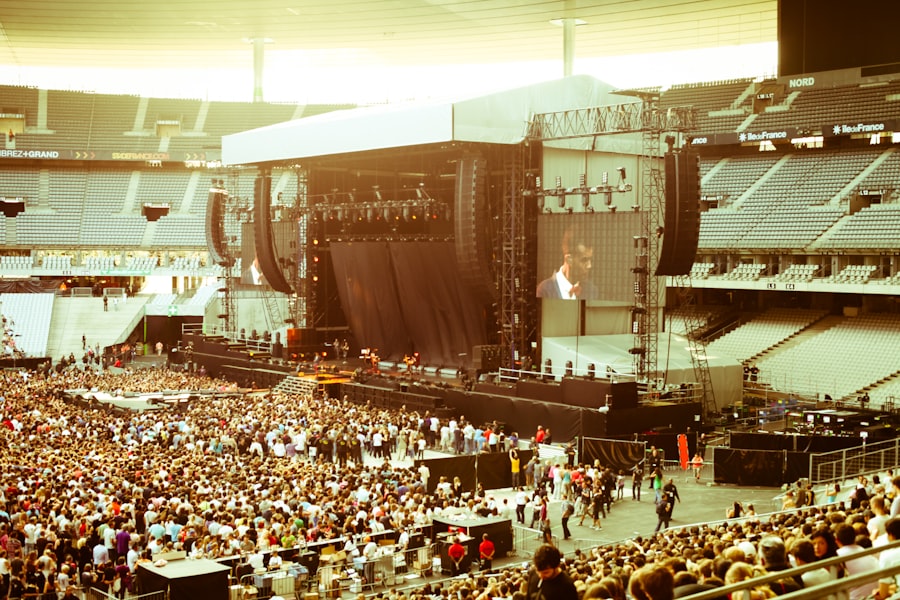Virtual Reality (VR) technology has undergone a remarkable transformation since its inception, evolving from rudimentary simulations to sophisticated immersive experiences that have found a significant place in event planning. Initially, VR was primarily associated with gaming and entertainment, characterized by clunky headsets and limited interactivity. However, as technology advanced, so did its applications.
The introduction of more powerful graphics processing units (GPUs), improved motion tracking, and the development of user-friendly interfaces have made VR more accessible and appealing to a broader audience. This evolution has paved the way for innovative uses in various sectors, including education, healthcare, and notably, event planning. In the context of event planning, VR has shifted from being a novelty to a necessity for many organizers looking to enhance their offerings.
The ability to create fully immersive environments allows planners to simulate venues, test layouts, and visualize attendee experiences before the actual event takes place. This capability not only streamlines the planning process but also enables organizers to make data-driven decisions that can significantly impact the success of an event. As VR technology continues to advance, its integration into event planning is expected to deepen, offering even more sophisticated tools for engagement and interaction.
Key Takeaways
- VR technology has evolved to become a valuable tool in event planning, offering immersive and interactive experiences for attendees.
- Using VR in large-scale event simulations allows for cost-effective and efficient planning, as well as the ability to visualize and customize event spaces.
- Challenges and limitations of VR in event planning include high costs, technical requirements, and potential limitations in replicating real-life experiences.
- VR has a significant impact on audience engagement and experience, providing a unique and memorable way for attendees to interact with events.
- Integrating VR into event marketing strategies can enhance promotion, increase brand visibility, and attract a wider audience through innovative experiences.
Advantages of Using VR in Large-Scale Event Simulations
Optimizing the Attendee Experience
For instance, a planner organizing a trade show can simulate booth placements, traffic flow, and even lighting conditions to optimize the attendee experience. This level of foresight can lead to more efficient use of space and resources, ultimately enhancing the overall event experience.
Enhancing Remote Collaboration
Moreover, VR facilitates remote collaboration among stakeholders involved in the event planning process. Teams can come together in a virtual environment regardless of their physical locations, allowing for real-time feedback and adjustments. This is particularly beneficial for large-scale events that require input from various departments, such as marketing, logistics, and design.
Reducing Miscommunications
By using VR, planners can ensure that everyone is on the same page and can visualize the event as it will unfold, reducing misunderstandings and miscommunications that often arise in traditional planning methods.
Challenges and Limitations of VR in Event Planning
Despite its numerous advantages, the integration of VR into event planning is not without challenges. One of the primary limitations is the cost associated with high-quality VR equipment and software. While prices have decreased over time, investing in advanced VR technology can still be prohibitive for smaller organizations or those with limited budgets.
Additionally, creating high-quality virtual environments requires specialized skills and expertise that may not be readily available within all planning teams. This can lead to reliance on external vendors or consultants, further increasing costs. Another challenge lies in the varying levels of comfort and familiarity with VR technology among potential users.
This disparity can create barriers to engagement during events that heavily rely on VR experiences. Event planners must consider these factors when designing their events to ensure inclusivity and accessibility for all attendees.
Balancing cutting-edge technology with user-friendly experiences is crucial for maximizing the benefits of VR in event planning.
The Impact of VR on Audience Engagement and Experience
The impact of VR on audience engagement is profound, as it offers unique opportunities for interaction that traditional formats cannot match. By immersing attendees in a virtual environment, organizers can create memorable experiences that resonate on a deeper emotional level. For example, a conference might use VR to transport participants to a simulated environment relevant to the theme of the event, such as a historical site or a futuristic cityscape.
This immersive storytelling approach captivates audiences and fosters a sense of connection to the content being presented. Furthermore, VR can facilitate interactive elements that enhance audience participation. Attendees can engage with virtual exhibits, participate in live polls within the VR environment, or even network with other participants through avatars.
This level of interactivity not only keeps attendees engaged but also encourages them to explore different aspects of the event at their own pace. As a result, VR has the potential to transform passive spectators into active participants, leading to richer experiences and greater retention of information shared during events.
Integrating VR into Event Marketing Strategies
Incorporating VR into event marketing strategies can significantly enhance promotional efforts and attract a wider audience. By offering potential attendees a taste of what they can expect through immersive previews or virtual tours, organizers can generate excitement and anticipation leading up to the event. For instance, a music festival might create a virtual experience that allows users to explore stages, view artist lineups, and even interact with past performances.
This not only serves as an effective marketing tool but also helps potential attendees visualize their experience before committing to purchase tickets. Moreover, VR can be leveraged for post-event engagement as well. After an event concludes, organizers can provide attendees with access to recorded sessions or highlights in a virtual format.
This allows participants to revisit key moments or share their experiences with others who could not attend. By extending the life of an event through VR content, planners can maintain engagement and foster community long after the physical gathering has ended.
Future Trends and Innovations in VR Event Planning
Personalization through Artificial Intelligence
The increasing integration of artificial intelligence (AI) with VR experiences is a notable trend. AI can enhance personalization by analyzing attendee data and tailoring virtual environments or interactions based on individual preferences. For instance, an AI-driven system could recommend specific sessions or networking opportunities within a virtual conference based on an attendee’s interests and past behavior.
The Rise of Hybrid Events
Another trend is the rise of hybrid events that combine both physical and virtual elements. As organizations recognize the value of reaching broader audiences beyond geographical limitations, hybrid models are becoming more prevalent.
Expanding Accessibility and Innovative Engagement
In this context, VR can play a crucial role by providing remote attendees with immersive experiences that closely mirror those of in-person participants. This approach not only expands accessibility but also allows for innovative engagement strategies that cater to diverse audiences.
Case Studies of Successful Implementation of VR in Large-Scale Events
Several organizations have successfully implemented VR technology in large-scale events, showcasing its potential to enhance attendee experiences and streamline planning processes. One notable example is the 2019 CES (Consumer Electronics Show), where exhibitors utilized VR to showcase their products in immersive environments. Companies like LG created virtual showrooms that allowed attendees to interact with their latest innovations without needing physical prototypes on-site.
This not only reduced logistical challenges but also provided a unique platform for storytelling that captivated audiences. Another compelling case study is the use of VR at the 2020 World Economic Forum in Davos. The organizers created a virtual reality experience that allowed participants from around the globe to engage with discussions and presentations remotely.
This innovative approach not only expanded access but also demonstrated how VR could facilitate meaningful conversations across borders.
The Role of VR in Creating Sustainable and Accessible Events
Sustainability is becoming an increasingly important consideration in event planning, and VR technology offers several avenues for promoting eco-friendly practices. By utilizing virtual environments for pre-event simulations or even hosting entirely virtual events, organizers can significantly reduce their carbon footprint associated with travel and physical setups. For instance, companies can opt for virtual conferences instead of flying attendees across the globe, thereby minimizing emissions while still delivering valuable content.
Accessibility is another critical aspect where VR can make a significant impact. By designing virtual experiences that cater to individuals with disabilities or those who may face challenges attending physical events due to distance or mobility issues, planners can create inclusive environments that welcome all participants. Features such as customizable avatars or assistive technologies within virtual spaces can enhance accessibility and ensure that everyone has an opportunity to engage fully with the content being presented.
In conclusion, as VR technology continues to evolve and integrate into event planning practices, its potential for enhancing audience engagement, streamlining logistics, and promoting sustainability becomes increasingly evident. The journey from traditional event formats to immersive virtual experiences represents not just a technological shift but also a fundamental change in how we conceive and execute events in an interconnected world.
The article “How to Choose the Right iPhone for You in 2023” provides valuable insights into the latest trends and features to consider when selecting a new smartphone. As technology continues to advance, it is crucial for event planners and simulation designers to stay up-to-date with the latest devices and capabilities. By understanding the best options for mobile devices, they can ensure that their VR experiences are accessible and engaging for all participants. For more information on choosing the right technology for your needs, check out this article.
FAQs
What is VR?
VR stands for virtual reality, which is a computer-generated simulation of an environment that can be interacted with in a seemingly real or physical way by a person using special electronic equipment, such as a helmet with a screen inside or gloves fitted with sensors.
How is VR used in large-scale event planning and simulations?
VR is used in large-scale event planning and simulations to create immersive and interactive experiences for participants. It allows event planners to visualize and design event spaces, simulate different scenarios, and provide virtual tours of venues.
What are the benefits of using VR in large-scale event planning and simulations?
The benefits of using VR in large-scale event planning and simulations include cost savings, time efficiency, enhanced creativity and innovation, improved communication and collaboration, and the ability to provide realistic and immersive experiences for participants.
What are the challenges of using VR in large-scale event planning and simulations?
Challenges of using VR in large-scale event planning and simulations include the initial cost of equipment and software, the need for specialized technical expertise, potential technical glitches, and the requirement for participants to have access to VR equipment.
What is the future of VR in large-scale event planning and simulations?
The future of VR in large-scale event planning and simulations is expected to involve advancements in technology, increased accessibility and affordability of VR equipment, integration with other emerging technologies such as augmented reality, and the development of more sophisticated and realistic virtual environments.



